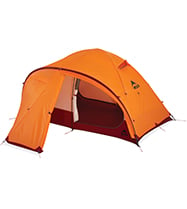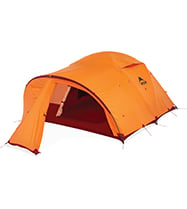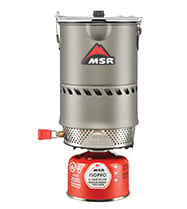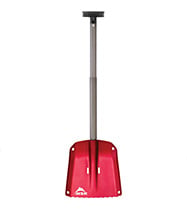Alpine Strongholds: The Remote Mountaineering Tent
“A mountaineering tent is your first line of defense against some of most severe and inhospitable conditions on the earth,” says Eric Larsen. As a record-setting polar explorer, mountaineer and guide, he knows. “I’ve literally spent years of my life living in a tent on one adventure or another. A well-designed tent is integral to your safety, and even survival.”
When MSR set out to redefine what a mountaineering tent could be, we worked closely with Eric. The result? Our Remote Mountaineering Series—expedition-grade, guide-worthy tents that deliver the benefits that big-mountain climbers need, with less weight and modern engineering.
“From 8,000 meter peaks to Mt. Rainier and everything in between, if you’re only going to have one mountaineering tent in your quiver this is your choice,” Eric says.
Mountaineering Tents Modern Design
With a handful of legit mountaineering and expedition tents on the market, why bother introducing something new?
“The fact is, mountaineering tents haven’t really evolved in 25 years,” says Terry Breaux, MSR tent designer. “Classic mountaineering tents are big and strong and heavy and that was fine in the past. But now people want all that in lighter weight designs.”
Using modern engineering and the latest technologies—including advanced pole materials—Remote tents compete with the construction of heavier mountaineering tents, at a lot less the weight. This makes them perfect for climbers who carry their supplies to progressively higher camps over days or weeks on a push toward the summit.
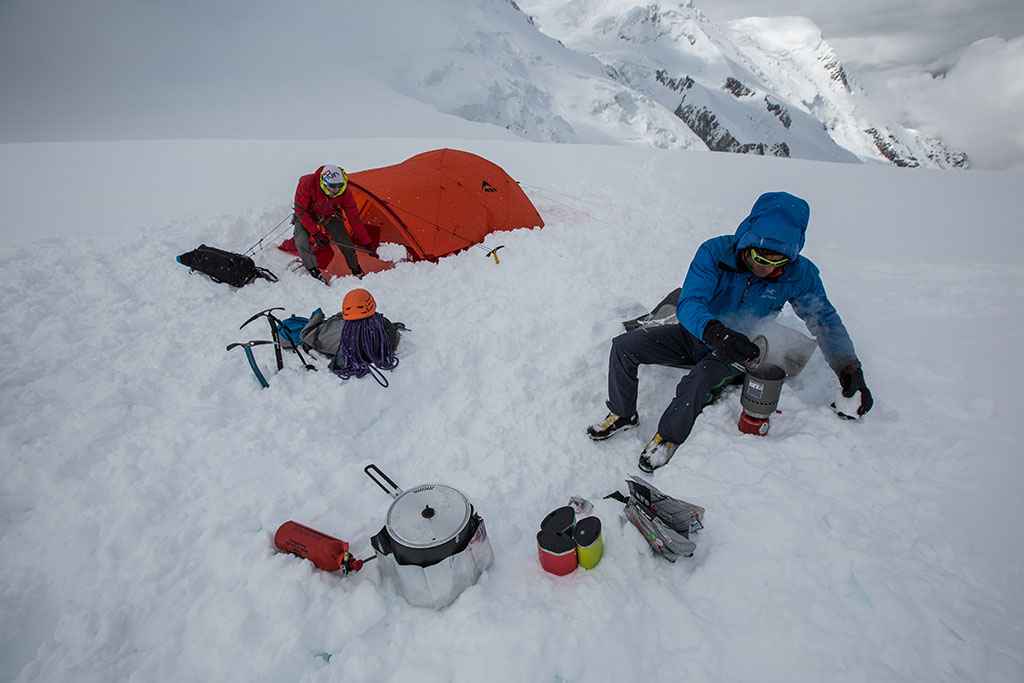
Robust Strength & Durability
High on the mountain, climbers face every possible environmental condition—snow, wind, rain, sleet, intense cold. “The only constant is change,” says Eric. “Winds are variable and can come from any and every direction. Temperatures can range from calm and above freezing to 20 or 30 below.
“I’ve suffered through torrential rainstorms on Mt. Rainier, blizzards and blowing snow in Alaska and brutal cold in the Himalayas.”
To stand up to these ruthless offenses, Remote tents are built with impressive brawn.
Sturdy Geometry
In addition to cross poles, the tents feature a center support pole that extends to the ground on either side. This creates 360 degrees of pillar strength that combats side winds. This geometry also maximizes strength in the roof where snow loads are heaviest.
Durable Fabrics
Remote tents are designed with durable 40D ripstop nylon on the floor to resist the abrasive qualities of snow. The tents’ rainfly—the outer rampart wall—is beefed up even further to 68D ripstop polyester with a serious 1800 mm polyurethane waterproof coating to defy the punishment of wind, snow and rain.
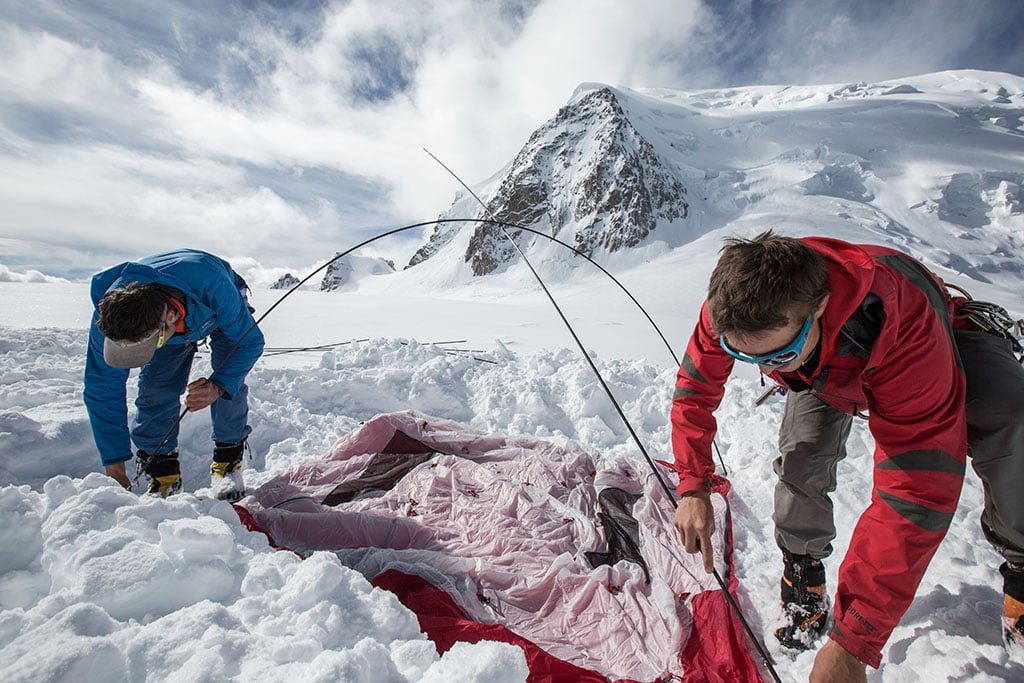
Resilient Easton® Syclone™ Poles
Traditional mountaineering tents feature larger-diameter aluminum poles for strength. “Because aluminum is unforgiving, you have to overbuild it,” says Terry.
To drop that weight, yet not durability, Remote Tents are among the industry’s first to feature cutting-edge Easton Syclone Poles.
Formed from aerospace-grade composite materials, Syclone poles flex, rather than break, under force. In conditions that would cause aluminum or carbon poles to bend or snap, Syclone poles bounce right back. “A failed aluminum pole can send you packing down the mountain,” says Terry. “Whereas, if your tent isn’t guyed-out super well, Syclone poles might flex in crazy winds, but they’ll bounce right back, so your trip can go on.”
Reinforced Stress Points
Guying-out your tent is critical to fortifying it against a fusillade of gale-force winds. To prevent fabric tears under these circumstances, Remote tents feature welded guy-out points that add an extra level of resilience.
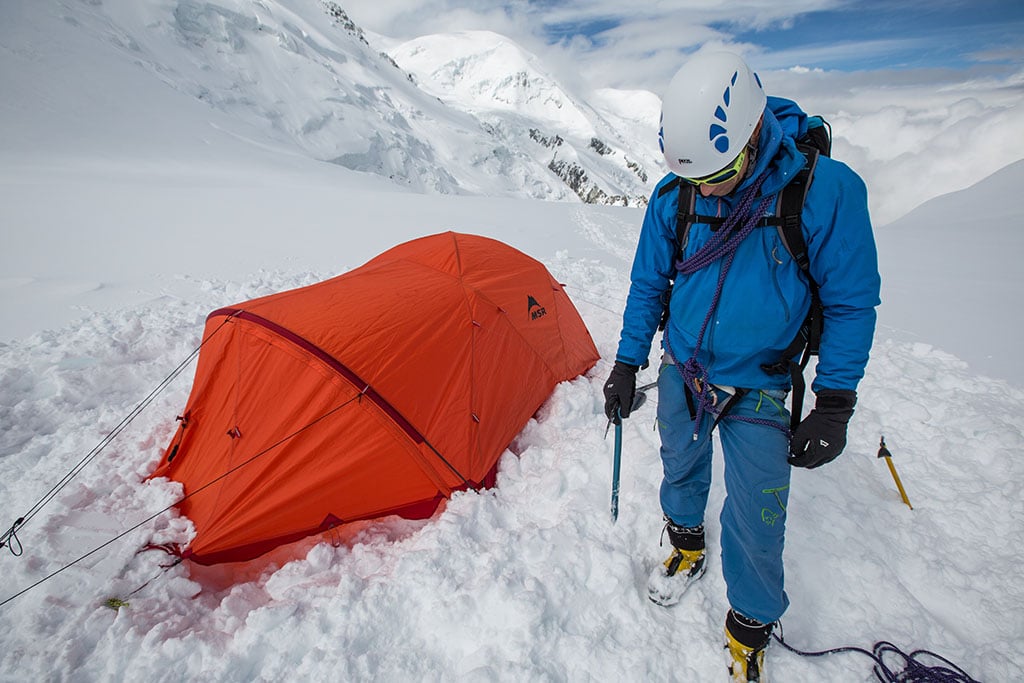
Less Weight than the Competition
Remote tents’ combination of lightweight poles, sturdy geometry—which allows for fewer poles—and targeted reinforcement saves a lot of weight without sacrificing durability.
The tents are up to 0.91 kg (2 lb) lighter than other mountaineering tents on the market.
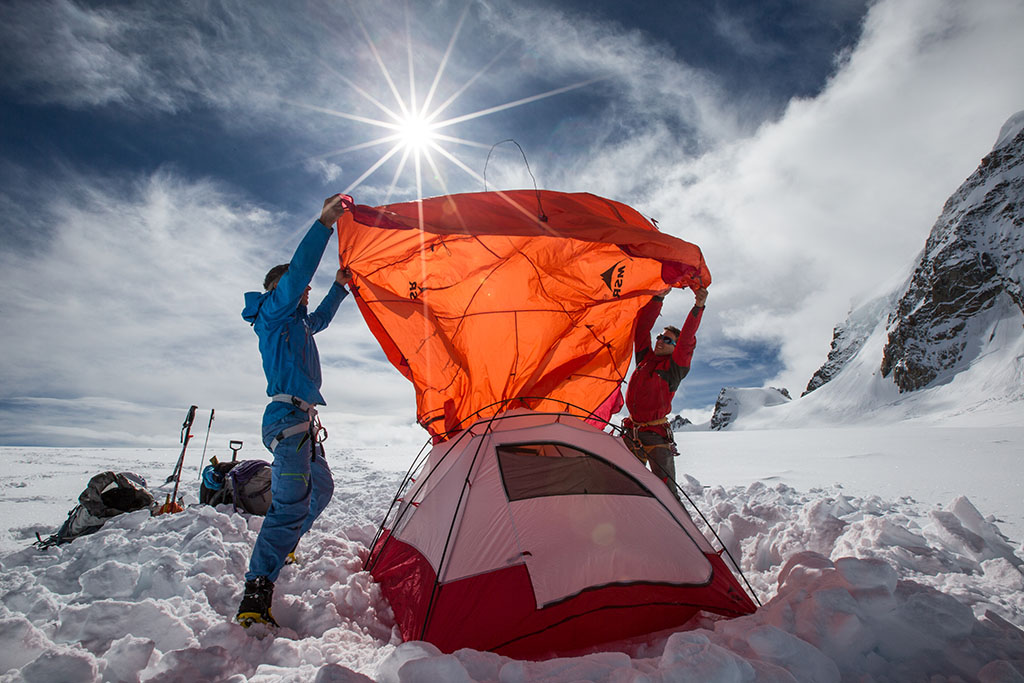
Fast Setup
Of course, durability and weight-savings mean nothing without good functionality. Remote tents are designed to be pitched fast so a climbing party can quickly take shelter from a storm.
“When it’s nuking and you need to get your tent up fast,” says Eric, “having a reliable easy-to-set-up shelter is the backbone of mountaineering expeditions.”
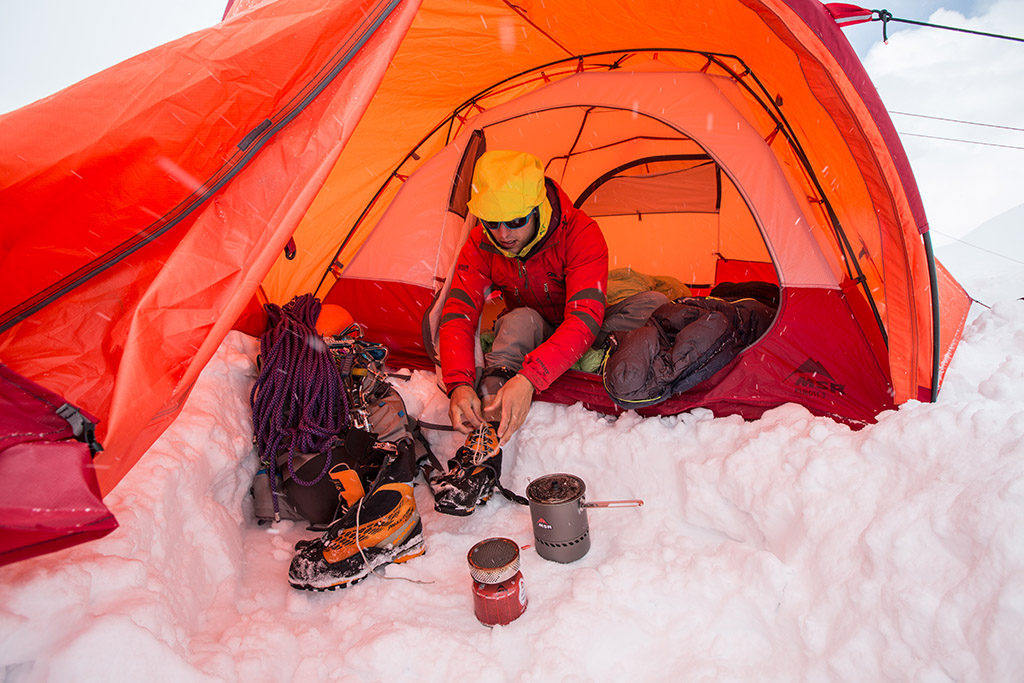
Giant Vestibule
On an expedition, your tent’s vestibule is equal parts dining room, staging zone, entry way, and gear storage for up to weeks’ worth of climbing gear.
To offer the space needed to accommodate these demands, Remote tents feature a spacious, hooped vestibule. Inside, gear loops let you line-dry damp clothes, like socks and base layers, for the next day’s climb.
Other smart features include side-access doors positioned to minimize the amount of wind or snow blowing directly into the tent when entering or exiting. And perimeter snow flaps, which add an extra level of overall stability and help shut out cruel spindrift and cold air.
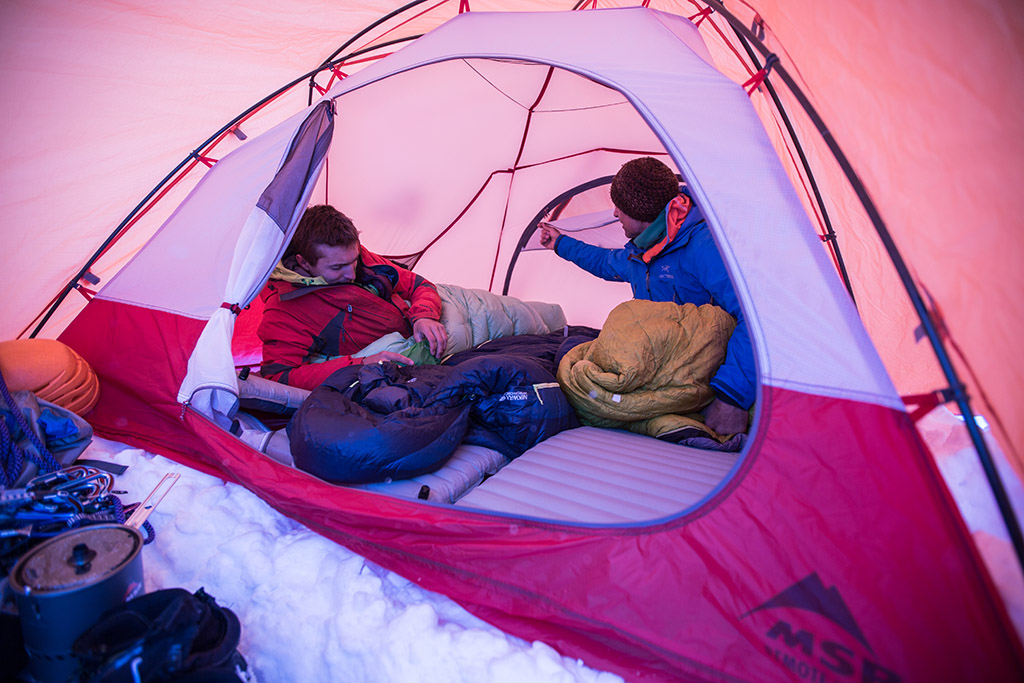
Livable Accommodations
“Trying to stay organized, dry, sleep comfortably, plan, relax … All these things become more difficult when squeezed into a small space carved into the side of some remote mountain,” says Eric. “The Remote has a spacious footprint which means you can comfortably fit three people inside a 3-person tent—a novel idea, I know!”
The tents’ “boxy” geometry maximizes headroom so you don’t feel cramped. A variety of pockets helps keep gear organized and your living quarters tidy. “The goal was to create a tent that not only protected you from the elements, but provided the livability that keeps you sane when you’ve been in alpine for weeks on end,” says Terry.
Adding a sense of security, mesh windows offer ample ventilation and may be sealed shut with a zipper panel when temperatures plummet or elements start to rage outside, allowing you to trap in the warmth and maintain a level of sound comfort.
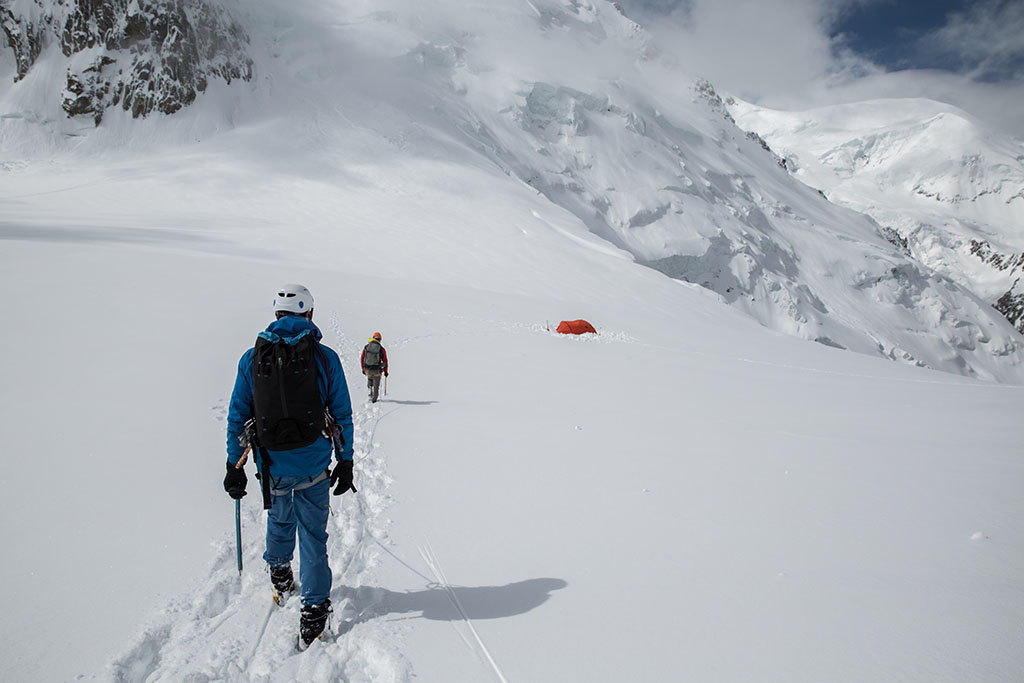
Security Far from the Comforts of Home
At MSR, we believe expedition tents should be built for pushing the boundaries of maps and human endeavor alike and our new Remote tents represent this mindset. With robust engineering and lightweight, livable details, they debunk the stereotype of a heavy alpine stronghold, all while offering a secure haven far from home.
Says Eric: “The Remote is a stable and sturdy base camp tent that is also equally at home higher up on the mountain—where the performance of both man and tent is put to the test.”
Related Posts:

